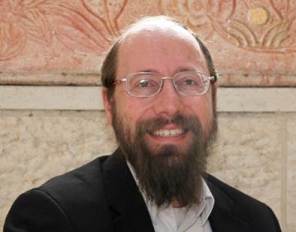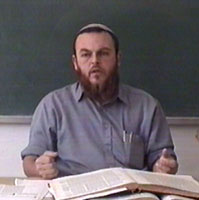Beit Midrash
- Sections
- Chemdat Yamim
- Parashat Hashavua
- Shabbat and Holidays
- The High Holidays
- Yom Kippur
One is the individual’s obligation to afflict himself (Vayikra 16:29), in addition to the regular refraining from forbidden work that is found on other holidays and Shabbat. In other words, a person’s normal flow of life is stopped, and he is forced to think. The five prohibitions of affliction (some from the Torah, while others might be of Rabbinic origin) create a behavioral and thereby cognitive change. They cover different areas of basic human needs (in days past, anointing was important for hygiene).
The second element of Yom Kippur is the service carried out in theBeit Hamikdash by the Kohen Gadol, with the help of a few assistants. This very involved service was performed only once a year, and it was very different from daily sacrifices. The majority of the nation was uninvolved in the events in the Beit Hamikdash on Yom Kippur and certainly could not play an active role in them. The height of the service took place in a totally secluded place, the Holy of Holies, in which no one else was allowed to enter or see, and special precautions were taken to ensure maximum purity and sanctity.
So, on Yom Kippur, the average person dealt with refraining from lower things. As far as positive steps, it was the nation’s highest spiritual representative who was active. The question then is: what positive activity was the average Jew involved in on this holy day? How did the unique spiritual atmosphere find expression?
In our days, the order of events that used to be followed in the Beit Hamikdash becomes a focal point of our davening, especially in the repetition of Musaf. Indeed, our prayers take up the majority of our day, but they are primarily post-Beit Hamikdash liturgy. What did our forefathers do?
Let me suggest an idea, which also has practical ramifications in our days. Chazal tell us that Tu B’Av and Yom Kippur were special days in Israel, in that the girls went out in borrowed white garments in order to not embarrass anyone (Taanit 26b). White garments, which we (including men) wear on Yom Kippur nowadays as well, hint at the involvement in societal matters, with a focus on not embarrassing others. In other words, people were called upon to put a strong focus on the mitzvot between man and his fellow man within the framework of this spiritual day. Yom Kippur is obviously not a holiday which includes the element of "there is no happiness without meat and wine" (see Pesachim 109a), but it is one which our forefathers used to improve society. Asking forgiveness and rectifying wrongdoings, not only physical ones but also oral and indirect ones, like the embarrassment of girls of lesser means, were the mitzvot of the day.
So, let me propose, ladies and gentlemen, that even though intense davening is a mainstay of our Yom Kippur, every community should dedicate a part of the day (including the break between tefillot) to activity to improve society. Let us remember that without individual and communal improvement of society, Yom Kippur cannot bring the desired atonement!

Revenge – Evil or Godly
Rabbi Shaul Yisraeli zt"l | 5772

Glory in the Clouds
Rabbi Yossef Carmel | 7 Shvat 5768

Looking for the Right Attributes
Various Rabbis | 5769





















